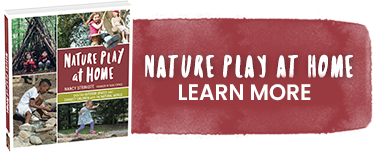This post represents a summary of several talks at the recent “International Green Schoolyard Conference”. Although I agree wholeheartedly with all of the ideas described below, I cannot take credit for many of the thoughts. Because the speakers’ positions were so powerfully and clearly expressed, I have quoted liberally from my notes, in an effort to bring these inspiring voices to my readers.
Cam Collier of Canada’s Evergreen calls it “bubble wrapped childhood” and says we’re killing our kids with caution.
By trying to keep them physically safe, we are depriving children of experiences that are essential to the development of a healthy sense of self confidence. It is not possible to create an environment that is free of risk, and in trying to do so, we remove rich play experiences. In a natural setting with tall trees to climb, pointy sticks, slippery rocks and unexpected holes in the ground we worry that “something might happen”. “I would love for something to happen” says Dr. Petter Akerblom of Movium and Swedish University of Agricultural Sciences in Uppsala. Their scrapes should be acknowledged as proof that “you tried to do something!”
In a talk by Dr. Bernard Spiegal of PLAYLINK, he asserted that our risk averse society is damaging children and teens.
He pointed out that many regulations governing outdoor play experiences demonstrate a belief that children are fragile, incompetent, incapable of making judgements, mostly incautious, incapable of learning and likely to fling themselves into situations they can’t handle. Clearly it would be morally offensive if we allowed such children to encounter a situation of risk.
As educators, we believe that children are just the opposite: strong, competent, clearly capable of learning and often astonishingly wise. Yet those of us who are experts at how children problem solve, develop resilience and learn to make decisions are often not the ones who determine what children will be allowed to experience when they’re outdoors. Instead a disproportionate and irrational level of fear of injury and litigation guides decision-making by technical experts, insurers and regulators, to the detriment of children’s healthy development.
Dr. Spiegal suggests that an acceptable level of risk in play should be “freedom from life threatening or permanently disabling injuries” He compares our acceptable risk thresholds in outdoor play settings with our acceptance, in sports like skiing and football, of broken bones and other injuries which are considered an expected and acceptable level of risk in exchange for the thrill and excitement of the sport. He suggests that our view of play spaces should be similar.
Dr. Spiegal on rubber surfacing: We rubber coats playgrounds in an attempt to protect kid’s bodies at all costs but by doing so deprive them of opportunities to develop a realistic understanding of the world. As children are figuring out how the world works, do we really want to suggest the false lesson that ground is a safe surface to fall on? In free play, we know that children learn that choices have consequences. If every surface is a soft one, then we are not teaching anything about the way the world really is.
Standard play equipment teaches children not to pay attention. When every rung is evenly spaced, it’s easy to let attention wander. Climbing a tree with varied limb diameters and spacing requires focused attention.
What is the science behind risk assessment? According to Dr. Spiegal, weak at best. When a real child falls, they instinctively put up their arms. Tests are often done on models or cadavers.
Traffic calming is 10x more cost effective at saving children’s lives than limiting play.
Allowing a child to cross a street alone is a real risk. Yet all parents must eventually allow it because they understand that it’s necessary.
The job of the parents, teachers and caregivers is NOT to succumb to every anxiety, nor to put their anxiety ahead of what is good for children. Sometimes you have to just look away!
The Risk/Experience Equation: (This is paraphrased very clumsily from Dr. Spiegal’s clear and logical explanation, due to my inadequate notes, but hopefully you get the gist.)
1. We understand and respect the inherent competence of children
2. Some things cannot be taught, only learned, such as confidence and resilience.
3. Some things can only be learned through experience.
4. If you haven’t had the experience, then you cannot learn those things (such as– watching someone climb high doesn’t tell you how you’d feel in a high place)
5. Any new experience is inherently risky and a potential hazard.
6. Any new experience is a potential learning opportunity (and potentially an opportunity for great fun).
7. We must balance the potential hazards with the potential learning and fun so that children will have the opportunity to exercise their competence and learn and grow through experience and risk taking in rich play settings.
For more from Dr Bernard Spiegal and colleagues on this compelling topic, check out “Managing Risk in Play Provision: Implementation Guide”.


